Pocket-Sized
USB Type-C® & PD Analyzer
Super affordable USB analyzer captures and decodes the widest range of USB 2.0 protocols plus Type-C, SBU, & Power-Delivery 3.2 messages.
Comprehensive USB Device class decoding is included with the Mercury T2C & T2P:
Complete list of USB Decodes
This allows users to see upper-level mapped protocol events within the trace eliminating the tedious process of manually decoding device specific commands. From Mass Storage to Communication Device Class (CDC), the Mercury T2C & T2P provide the most complete decoding of USB device transactions.
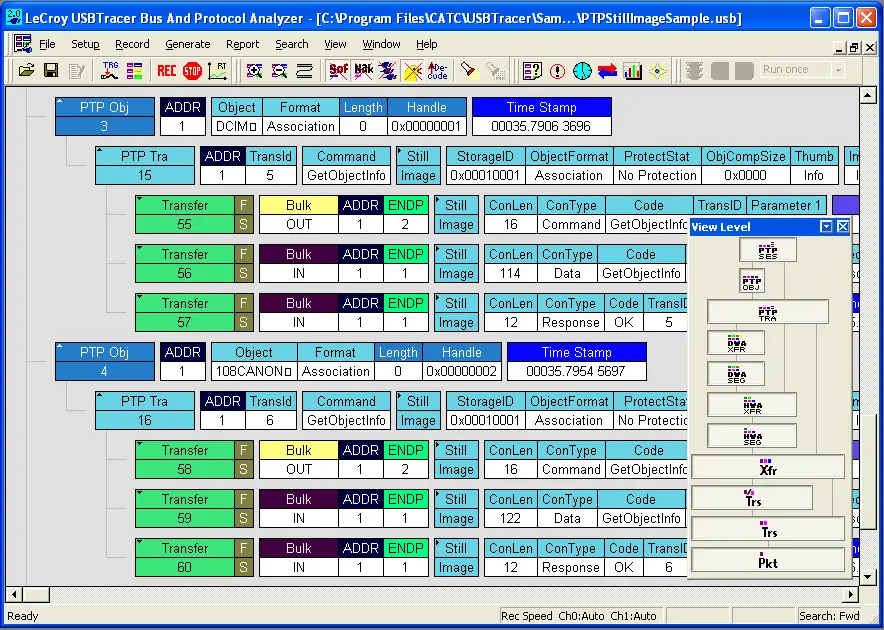
The Mercury solutions lead the industry in affordability offering comprehensive USB 2.0 test and analysis features. Starting at $995, the Mercury can be used virtually anywhere, extending beyond the lab environment over to the personal workstations of USB developers. Every engineer within a design team (hardware, software, and firmware) will appreciate the benefit of having a personal analyzer to fit their individual needs.

Featuring the industry-leading CATC Trace expert analysis software, the Mercury T2C & T2P provide an easy-to-use display that graphically decodes logical protocol events. All models of the Mercury include the same comprehensive decoding of the higher layer protocols which can be expanded to show the underlying transactions and packets.

Completely passive in design, the Mercury preserves real-world signaling and provides 100% faithful representation of traffic on the bus. Featuring a high-impedance, non-intrusive probe, the Mercury acts strictly as a "sniffer" and does not re-time the signal or significantly degrade the amplitude between the host and device. The Mercury T2C offers 256MB; while the Mercury T2P doubles the recording capacity to 512MB. Both systems can extend capacity with filtering, data truncation, and spool-to-disk capture for longer recording times. Fully compatible with USB Type-C standard, all Mercury models will ‘pass through’ SuperSpeed or Alternate-mode signaling without affecting their operation.
Isolating specific protocol events with real time triggering is essential to capture intermittent problems. Both the Mercury T2C & T2P provide sophisticated triggering with drag-and-drop selections for PID type, data patterns, standard requests, errors, and bus events. The Mercury provides 14 protocol error triggers with auto-detection of several additional post-capture errors. The ability to trigger & pinpoint specific bus conditions as they occur saves time during testing and debug.
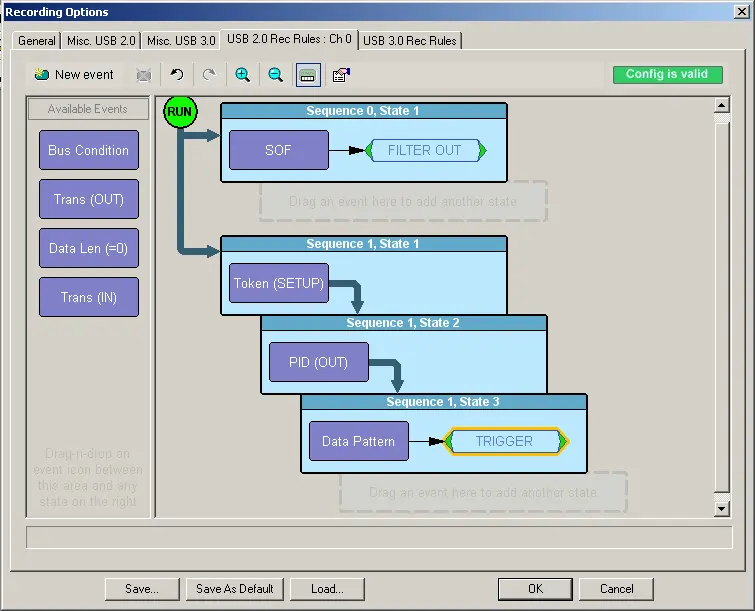
The Power Tracker option monitors Vbus power draw and displays voltage graphically in a time line format. This power information is synchronized to the trace allowing users to verify power state transitions at the both the protocol and electrical layers. Completely transparent to the system-under-test, the Power Tracker samples VBUS and CC voltage during normal operations. It correlates these physical layer measurements with logical protocol layer events.
The CATC trace software includes a persistent timing display that provides one-click measurements between events. The bandwidth calculator provides full bus utilization metrics for any range of packets.

Teledyne LeCroy's USB software provides many mechanisms to measure and report on USB traffic. The Bus Utilization graphs packet length, bus usage by device and SCSI pending I/Os. Using the Traffic Summary window, users can evaluate statistical reports at a glance or navigate to individual packets, transactions or transfers.
Powerful search and reporting options allow users to quickly navigate to specific packets, errors and any data type within a trace file. The CATC Trace also supports filter and hide commands, to remove irrelevant data from the Trace for efficient viewing.
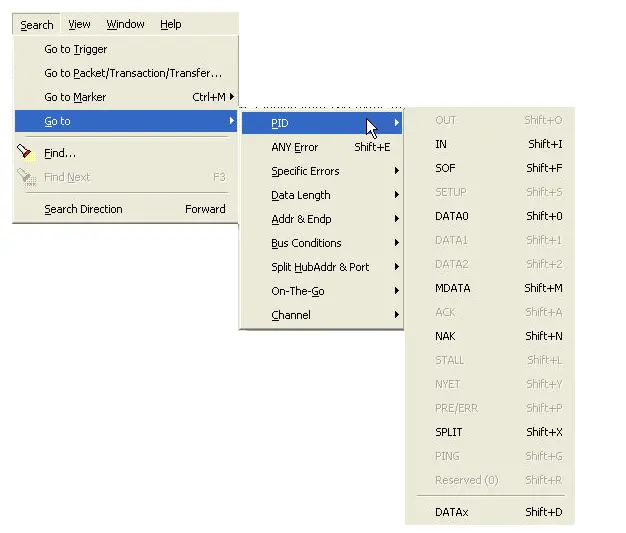
The Mercury T2P is also available with “SBU Capture” options allowing users to see DisplayPort Aux channel messages (USB-MCDP-M03-X) or Thunderbolt-3 low-speed communications (USB-MCTB-M03-X). Fully compatible with alt-mode devices that support DisplayPort 1.4, the DP capture mode decodes the essential back-channel communication for Type-C connections that utilize DP alt-mode. For Thunderbolt-3 developers, the Mercury T2P SBU capture option for Thunderbolt-3 decodes the essential link discovery, transmitter training and configuration phases which are transmitted over the low-speed (UART) back channel.
| Name | |
|---|---|
Probing Embedded USB Bus Designs W hen recording data traffic between USB devices on a PCB that does have external connectors, you may need to build your own probe to connect directly to the USB bus on the PCB. | Application Note |
Type-C Cable Orientation For the first time in USB, the new Type-C specification defines a connector that can operate in either of the two logical orientations. This application note explains the technical considerations in effect when operating the Voyager M310C with USB Type-C cables. With an understanding of how a Type-C cable operates, users will find that the M310C design allows the ability to test all logical cable orientations in their system.The Mercury T2C also follows these plug orientation conventions. | Application Note |
Mercury T2C / T2P Cable Set App Note | Application Note |
Mercury T2C / T2P Datasheet | Datasheet |
App Note: Application Debugging USB Bus Utilization Graph The bus utilization graph found in the range of CATC USB Analyser applications provides a valuable time-scaled view in addition to the chronological packet and logical transfer views of the primary display window. | Application Note |
App Note: How to do File Based Decoding for USB This document shows step-by-step how to decode USB transfers associated with higher-level protocols than USB. | Application Note |
| Name | |
|---|---|
USB Mercury T2C Quick Start | Product Manual |
Voyager Exerciser Language Manual | Product Manual |
USB Protocol Suite Verification Script Engine Manual | Product Manual |
USB4 Exerciser Manual | Product Manual |
USB Power Delivery Exerciser Manual | Product Manual |
USB Protocol Suite User Manual | Product Manual |
The Mercury T2P supports “SBU Capture” allowing users to record DisplayPort Aux channel and I2c messages while passing through high resolution video main data stream without distortion. Fully compatible with DP 1.4, the SBU capture mode decodes the essential back channel communication for Type-C connections that support DisplayPort Alt-Modes.

Ordering information
USB-MCDP-M03-X Add SBU Decode (DisplayPort Aux) to Mercury T2P Standard or Advanced USB Analyzer (includes full featured USB 3.1 USB Type C to C 0.3m unmarked cable)
The Mercury T2P supports "SBU Capture" allowing users to record Thunderbolt-3 low-speed communications while passing through high speed Thunderbolt-3 data traffic. Fully compatible with the latest Thunderbolt-3 chipsets, the SBU capture mode decodes the essential link discovery, transmitter training and configuration phases which are transmitted over the low-speed (UART) back channel. Combined with the Power Delivery capture option, the Mercury T2P can also show the PD Alt-Mode handshake which is the first step in bringing up a Thunderbolt-3 connection.
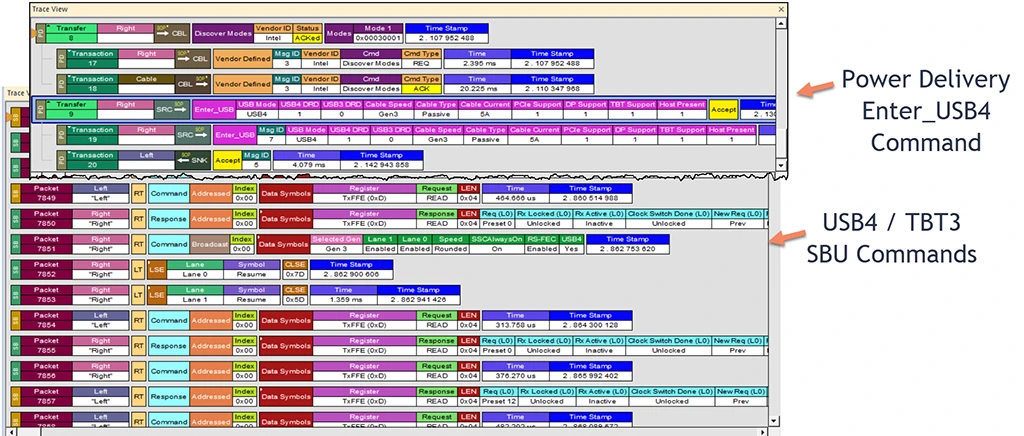
Ordering information
USB-MCTB-M03-X Add SBU Decode (Thunderbolt-3 LSTX messages) to Mercury T2P (Standard or Advanced model)
The Mercury T2C/T2P analyzer is available with an optional mode to record Power Delivery PD 2.0 & 3.0 protocol exchanges. This includes full decoding of PD Message types, source/sink capabilities and role-swap requests. All events are labeled, timestamped and interleaved within the logical USB 2.0 trace view. VCONN assert/de-assert, Hard Reset, Cable Reset events are shown allowing users to verify conformance for Type “C” timing and state changes. The Mercury T2C/T2P includes one production level type “C” cable rated to support bi-directional power charging at up to 100W. Fully compatible with Alternate Mode devices, the Mercury T2C/T2P is designed to non-intrusively pass-through Alt-Mode signaling.
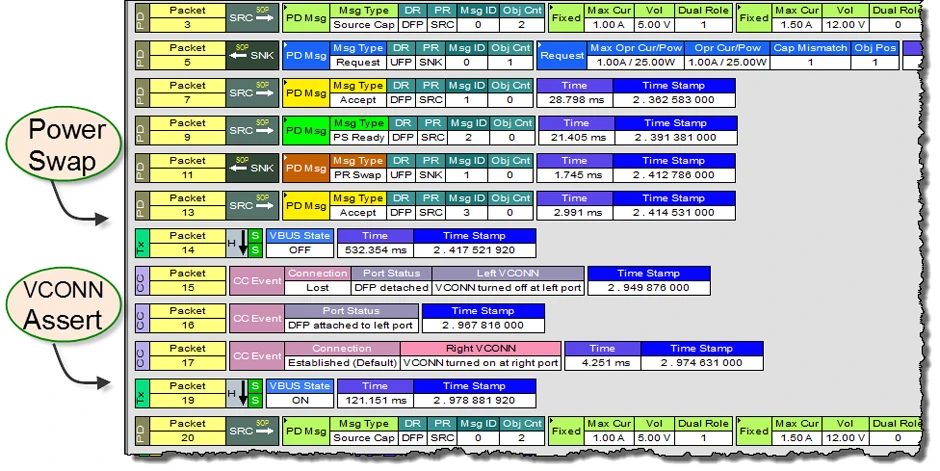
Ordering information
USB-MCPD-M02-A Mercury T2C / T2P Add Power Delivery capture (to either USB Standard or Advanced analyzer)
Ordering information
USB-TMA2-M02-A Mercury T2C / T2P Add Advanced USB Software options (from USB Standard model)
The external trigger cable allows the Mercury T2/T2C/T2P to interface with general purpose test equipment and provide external In & Out signals. BNC connectors allow cross-triggering on external instruments using any available USB trigger event including or frames, errors, PD or USB state changes.

Ordering information
AC032XXA-X Mercury External Trigger Cable